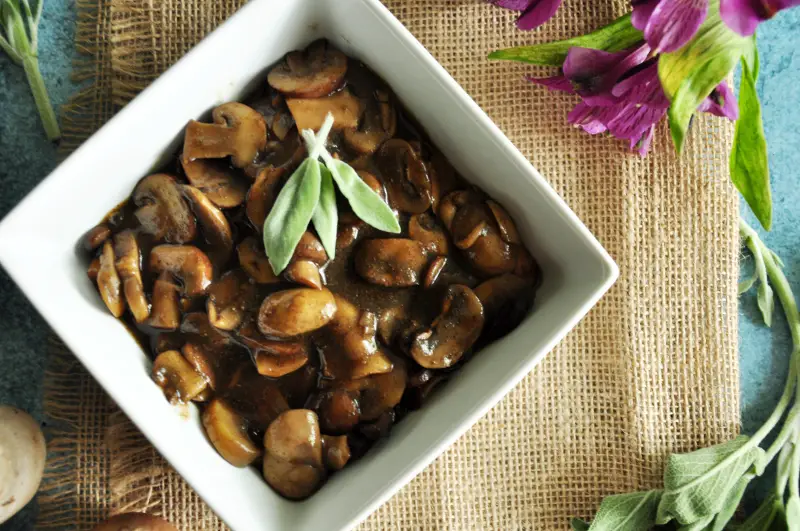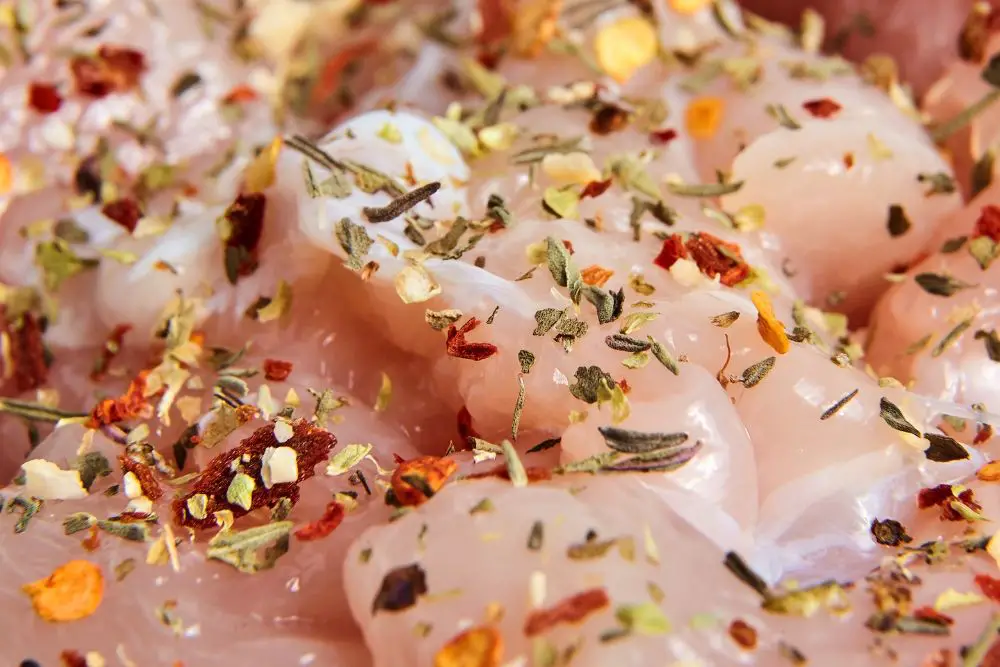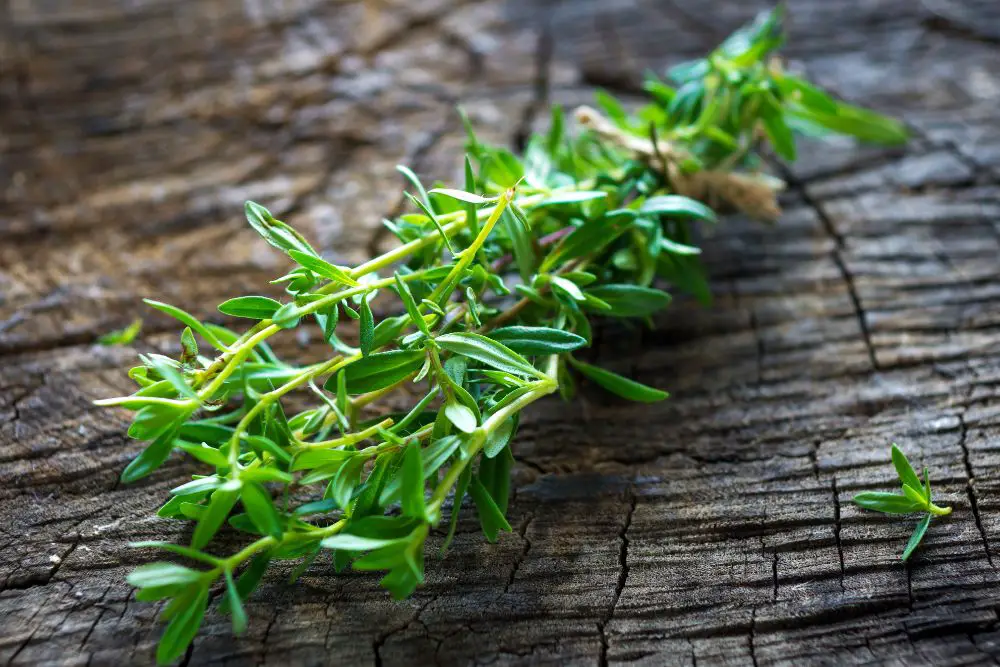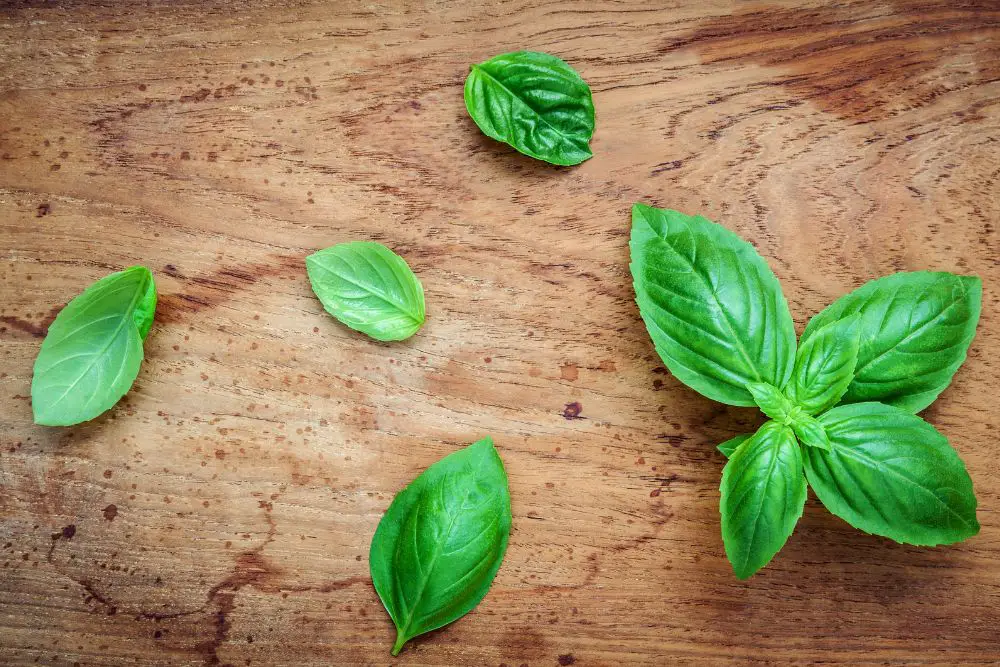8 Best Sage Substitute Options: Your Complete Guide to Sage
What are the best sage substitute options? Learn which herbs can create similar flavors to sage and how to substitute them properly.

Are you whipping up a batch of brown butter fettuccine or a pot of creamy, puréed pumpkin soup? The last thing you want to see when heading over to your spice rack is that you’re out of sage. Luckily, a few common herbs can rise to the occasion as excellent sage substitutes.
Before we dive into the sage substitute list, let’s take a quick look at its flavor profile and some other sage advice for replacing it in your recipes. (No, I will never pass up a food pun…)
All About Sage: What It Is, How It’s Used, Flavor Profile, and Other Facts
Fresh sage resembles somewhat of a bushy plant with soft, pointy leaves. It’s a member of the mint family, closely related to thyme, marjoram, rosemary, oregano, lemon balm, and basil.
Sage’s bitter, earthy, and sweet flavor profile is more overpowering than most of its relatives. It offers hints of citrus, eucalyptus, and pine and is a key aromatic in Mediterranean and Italian dishes.
Sage deepens the flavors of pasta sauces, sautéed cannellini beans, pork, and sausages. One of the most decadent ways to enjoy sage is fried as a crispy garnish for rich, creamy butternut squash ravioli.
In North America, sage is famously used for holiday cooking— a key ingredient in stuffing, turkey, and savory vegetable dishes, like these addictive Sage Mushrooms or Hasselback Potatoes. Sage has even been coined “the ultimate fall herb” for making pumpkin and winter squash recipes dance on your taste buds.

Although sage is soft on the outside, it’s tough enough to withstand high temperatures. This means it’s easy to cook with because it always retains its flavor, regardless of when it’s added during the cooking process (other herbs are more delicate and must be added at the end).
Sage is believed to have numerous health benefits and was used in Greek, Egyptian, and Greek medicine. (1) It’s believed to help with digestive issues such as flatulence and bloating, which is coincidental, as chefs consider sage the perfect addition to rich, fatty meals.
Can you believe there are over 700 different species of sage? Out of those 700, only a few are edible. The type of sage you’re most likely to use in recipes is called garden sage or simply “common sage.”
Four Ways to Find Common Sage: What You Need to Know
Common sage is found in four forms: fresh, ground, dried, or rubbed. Here are the differences and how their flavor profiles vary.
Fresh sage: As with most herbs, fresh sage leaves will yield the strongest flavor, but they’re not always easy to find. You’ll typically find ground sage, dried sage leaves, or rubbed sage at the grocery store.
Whole dried sage leaves: The whole dried leaves have a crispy texture and will be less potent than the fresh leaves. You can mince them for easier use and measuring.

Rubbed sage: Sometimes simply called “dried sage,” rubbed sage is made by rubbing a pile of whole dried sage leaves together until they become a light, fluffy powder. This also reduces the potency. Chefs prefer this variety of sage. You can easily make your own rubbed sage at home. All you need is a fine mesh strainer and whole dried sage leaves.
Ground sage: Ground sage is made by grinding the whole dried sage leaf into a very fine powder. The final product almost resembles a lighter version of cinnamon. Fresh sage and ground sage are more potent than rubbed sage.
Can You Substitute One Type of Sage for Another?

You can substitute dried sage if your recipe calls for fresh or rubbed sage. Just remember that ground herbs are always stronger than their fresh counterparts— which means you’ll always need less of the dried form than the fresh herb.
All forms of common sage have different strengths, with rubbed sage being the least potent. Here’s a general guideline on substituting one type of sage for another. You can also let your tastebuds guide you.
- One tablespoon of fresh sage = one teaspoon of rubbed sage
- One tablespoon of fresh sage = ½ teaspoon of ground sage
- One teaspoon of rubbed sage = ½ teaspoon ground sage (When using rubbed sage in place of ground sage, simply double it.)
Now that we’ve covered all there is to know about sage let’s take a look at the best substitutes to turn to when you’re all out.
8 Best Sage Substitute Options
1. Marjoram

What to know: The closest herb to sage is marjoram. Although milder than sage, it is also a member of the mint family and has pine and citrus flavors. It pairs well with meat, poultry, and pasta dishes and is available in both fresh and dried forms. Marjoram’s flavoring is described as a more subtle oregano. It must be added at the last stage of the cooking process to retain its flavor.
How to substitute: Substitute in equal amounts. One teaspoon of fresh or dried sage = one teaspoon of fresh or dried marjoram.
2. Thyme

What to know: If you don’t have marjoram, thyme is your next best bet. As another member of the mint family, thyme is earthy, slightly sweet, and has hints of citrus, pepper, and mint. Fresh thyme could even be mistaken as a mini sage plant from far away.
Thyme has a softer taste than sage and is used widely in Mediterranean and Italian cuisine to flavor salad dressings, meat, poultry, vegetables, and pasta dishes. Thus, it is a safe alternative for most sage recipes.
How to substitute: Substitute in equal amounts. One teaspoon of fresh or dried sage = one teaspoon of fresh or dried thyme.
3. Poultry Seasoning

What to know: Poultry seasoning is a spice blend that includes sage and its close relatives: marjoram, thyme, and rosemary. It can also contain nutmeg, black pepper, parsley, cloves, and/or celery seed.
As a blend that includes just a small amount of sage, poultry seasoning won’t be a direct substitute but can offer slight hints of sage’s flavors. Poultry seasoning works best as a sage substitute in soups, chicken, turkey, or stuffing dishes.
How to substitute: Substitute in equal amounts. One teaspoon of dried sage = one teaspoon of poultry seasoning.
4. Oregano

What to know: If thyme had a wild, sassy older sister, it would be oregano. More zippy, sharp, and peppery than thyme, oregano can also be a sage substitute. But due to the sharper taste, it won’t be an exact replica. You’ll have the most success substituting sage for oregano in poultry dishes and pasta sauces.
How to substitute: Substitute in equal amounts. One teaspoon of dried sage = one teaspoon of dried oregano.
5. Savory: The Canadian Version of Sage

What to know: Savory has a flavor profile similar to sage and grows abundantly in Canada, so it’s nicknamed the “Canadian sage.” Although not a member of the mint family, savory has hints of mint, marjoram, thyme, and pepper. Savory is also a key ingredient in herbs de Provence.
Savory comes in two varieties: winter savory and summer savory. Both can be used as sage substitutes, but note that winter savory has a bitter flavor (so you may want to start with half the amount).
How to substitute: Substitute in equal amounts. One teaspoon of dried sage = one teaspoon of savory. One teaspoon of fresh sage = one teaspoon of savory.
6. Sweet Basil

What to know: Basil is the hallmark herb of tomato-based pizza and sauces, so isn’t it crazy to learn that sweet basil (the most common variety of basil) is yet another member of the mint family? Although not identical to sage, basil has hints of mint with sweet and peppery notes that will suffice for Italian and Mediterranean-style recipes.
How to substitute: Substitute in equal amounts. One teaspoon of dried sage equals one teaspoon of dried basil, and one teaspoon of fresh sage equals one teaspoon of fresh basil.
7. Rosemary

What to know: If sage is Thelma, rosemary is Louise. More dominant and “confronting” than sage (and many other herbs), rosemary can be a sage substitute if used in smaller ratios.
The flavor profile of rosemary is woodsy, with notes of pine, pepper, and citrus. Although it’s a potent herb, rosemary is also very versatile. It pairs well with everything from grains, mushrooms, and potato dishes to poultry, steaks, soups, and stews.
How to substitute: One teaspoon of dried or fresh sage = ⅓ teaspoon of rosemary.
8. Mint

What to know: By now, you know that sage and mint are relatives. Albeit distant relatives, they have bitterness and hints of pine in common.
Mint is more delicate than sage and tends to be associated with flavoring sweeter recipes, such as desserts and cocktails. However, mint also pairs well and adds hints of freshness to pesto, salad dressings, risotto, and poultry dishes (just take a look at this Garlic Ginger Chicken with Cilantro and Mint— yum!).
That said, mint won’t be a direct substitute for sage when it comes to cooking richer meals, such as savory Thanksgiving stuffing or steak, but it can step in where sage is needed in lighter dishes. Note that mint doesn’t retain its flavor at high temperatures, so be sure to add it at the last stage of the cooking process.
How to substitute: Substitute in equal amounts. One teaspoon of fresh sage = one teaspoon of fresh mint. One fresh sage leaf = one mint leaf.
The Takeaway
Sage is a bitter, earthy, and sweet herb with hints of citrus, eucalyptus, and pine. Its rich flavor complements meat, poultry, and vegetable dishes beautifully—and it’s used widely in Mediterranean and Italian cuisine.
You can substitute one type of sage for another (such as ground sage for rubbed sage or fresh sage), but remember that the ground herb will always be more potent, while fresh leaves are always more flavorful.
When you’re all out of sage, the next best substitute is marjoram or thyme. Other herbs you can use in place of sage are sweet basil, oregano, rosemary, mint, summer or winter savory, and poultry seasoning.

About the Author
Sharon Chen is an Integrative Nutrition Health Coach and author of the Complete Sous Vide Cookbook. She believes food not only brings healing but also connection. As the creator of StreetSmart Kitchen, she aims to make meal prep easier than ever and help you find balance, ease, joy, and simplicity in the kitchen as you improve your well-being.



Pingback: What Does It Mean If Sage Smells Bad for Me? - Exploring Personal Aromatherapy Preferences - Ancestor Altars
Pingback: List of 20+ what does sage taste like